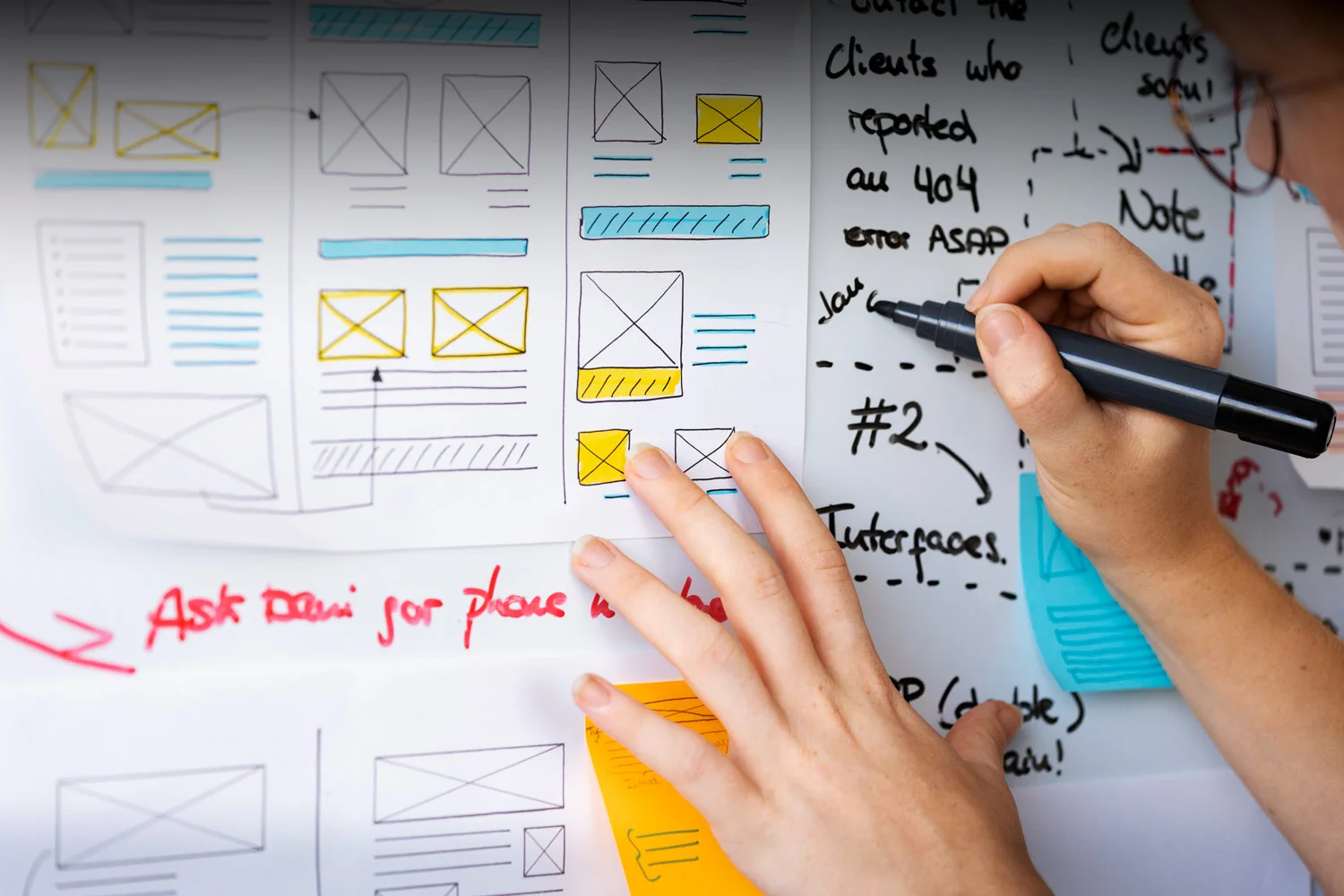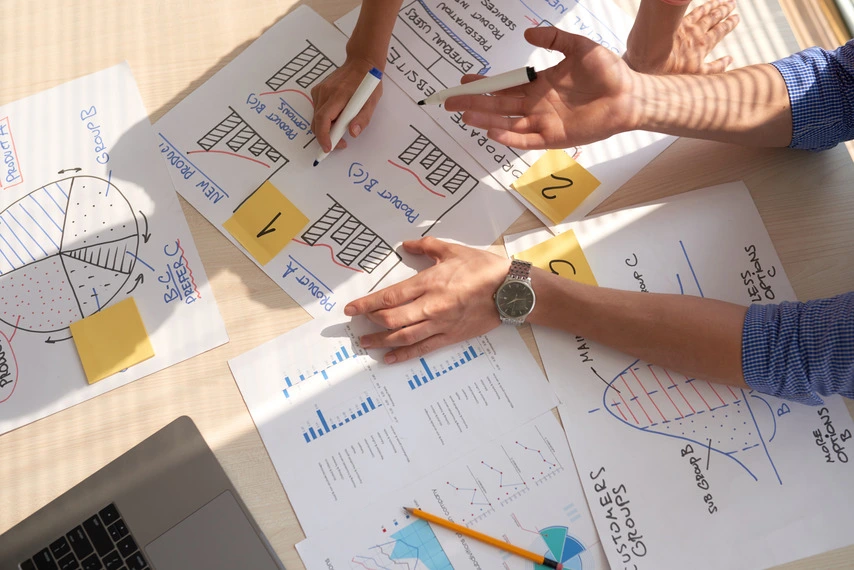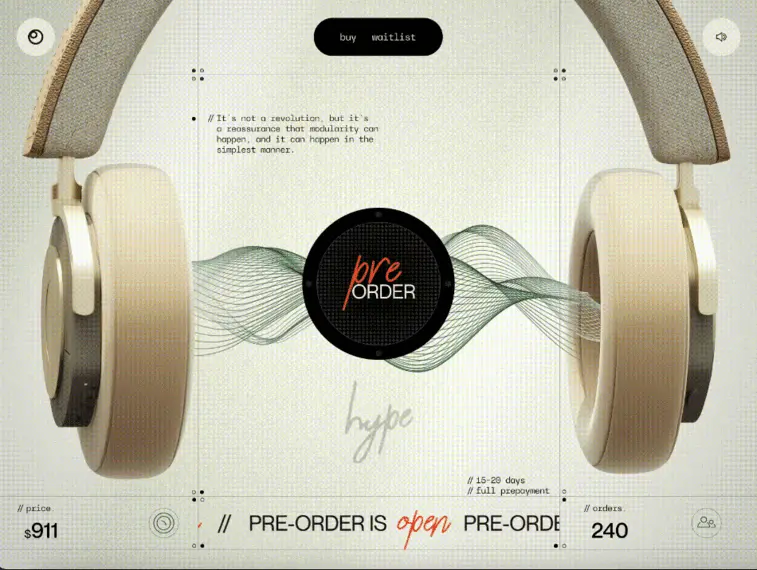
Home / Company / Our Process
guided by Excellence Unmatched Software Expertise
Empower your business with tailored, impactful, and innovative solutions

Discovery
Conducting intensive research to know your business, processes and intent
Our engineering excellence is the result of a well-defined research process that helps us build software to fulfill your digital aspirations.
Objective
- Conduct a comprehensive review of the entire project with the client
- Gain an accurate perspective of the project’s intent
- Analyze the competitive landscape extensively
- Research the target market niche, its demographics and geographies
- Convey the project requirements to internal stakeholders and clear any doubts
- Document client branding preferences, project assumptions and constraints
- Creating a precise, high-quality epic map
Expected Outcome
- Thorough understanding of project scope
- Bringing cross-functional team members on the same platform
- Helping in planning and prioritization
- Gaining insights to define realistic milestones
Team Involved
- Project Manager
- Tech Lead
- IA & UX Lead
- Project Owner / Client
- Business Analyst
Planning
Meticulously develop a strategic roadmap that meets client expectations
We stay on course by developing a project plan that sets realistic milestones and defines sprint requirements and deliverables.
Objective
- Document everything to enable software development success
- Evaluate the project’s technical, operational, and financial feasibility
- Define the project scope to set clear expectations
- Identify and allocate necessary resources, human and technology
- Develop strategies for proactive risk management
- Establish a project timeline with defined milestones
Expected Outcome
- Develop a reference guide that outlines tasks, responsibilities, timelines, and dependencies
- Obtain approval and sign-off from client on key documents
- Establish key performance indicators (KPIs) and metrics for project success
- Proceed to the design phase


Design
Craft a blueprint to turn your software vision to digital into a digital reality
Through our well-designed wireframes and prototypes, we offer clients a preview and ask for feedback that we incorporate promptly.
Objective
- Define the information architecture of the system
- Detail design specifications for algorithms, data structures, and interfaces
- Design the database schema for efficient data storage and retrieval
- Create wireframes, mockups, and prototypes of the UI/UX
- Incorporate security measures and protocols into the design
- Plan third-party integrations carefully
Expected Outcome
- Prototypes help validate design concepts
- Gather feedback to improve software design
- Knowledge of required tools, technologies, and frameworks
- Client’s go-ahead to proceed to the development stage
Team Involved
Development
Enable frontend, backend, and API development and third-party integrations
We leverage DevOps and the Agile Scrum methodology to implement a strategy that facilitates iterative and incremental development.
Objective
- Factor in multi-tenancy and scalability to enable the system to handle growth and multiple user groups efficiently
- Extend the system’s functionality and interoperability through third-party integration
- Set up a sprint/milestone frequency to maintain regular progress checks and deliverables
- Craft an optimized, clean code structure that follows its best practices
- Involve the client in reviews at the end of each sprint/milestone
- Maintain comprehensive documentation that includes code, system architecture, and user guides
- Foster effective collaboration and communication among team members
- Integrate robust security measures to protect the system from vulnerabilities
Expected Outcome
- Back-end: JavaScript, NodeJS (Express/Nest), PHP, Laravel, Cake PHP, Python, Django/Flask, Java, Spring, Dot Net
- Front-end: AngularJS, ReactJS, JavaScript, VueJS, Micro Frontend Development
- Database: MySQL/MariaDB, PostgreSQL, MongoDB (NoSQL), Oracle
- CMS & eCommerce: WordPress, WooCommerce, PHP, Drupal + Acquia, CMS, Strapi (Headless), Webflow, Shopify, Magento eCommerce, Sitecore
- DevOps: AWS Cloud, Azure Cloud, GCP Cloud, Jenkins CI/CD, Kubernetes, Docker, Containers
Mobile technologies
- iOS: ObjectiveC, Swift, iOS Native
- Android: Java, Android Native, Kotlin
- Hybrid: Ionic, ReactNative, Flutter
Team Involved
- Project Manager
- Tech Lead
- Front-End Developers
- Back-End Developers
- QA Engineer


Testing
Driving high-quality results through iterative testing and quality assurance
We employ a selected mix of manual and automated tests to ensure the software is free from all bugs, flaws, and technical glitches.
Objective
- Perform rigorous testing of each sprint/milestone
- Identify and report bugs for prioritization and resolution
- Provide a quality release to verify the resolution of issues
and the stability of the software - Leverage regression testing after each sprint to ensure the application continues to perform optimally
- Increase efficiency and coverage of repetitive test cases
- Identify and address cyber vulnerabilities proactively
Tools
- Firewalls: Cisco ASA, Palo Alto Networks, Fortinet
- Endpoint Protection: Symantec, McAfee, CrowdStrike
- SIEM Solutions: Splunk, IBM QRadar, ArcSight
- Threat Intelligence: ThreatConnect, Recorded Future, Anomali
- Access Management: Okta, Microsoft Azure AD, RSA SecurID
- Encryption: AES, RSA, TLS/SSL
- Network Security: Cisco, Juniper Networks, Check Point
- Cloud Security: AWS Security Hub, Azure Security Center, Google Cloud Security
- Vulnerability Management: Nessus, Qualys, Rapid7
- Penetration Testing: Metasploit, Burp Suite, Wireshark
- Backup and Recovery: Veeam, Acronis, Veritas
- Awareness Training: KnowBe4, SANS Security Awareness, PhishMe
Type of testing
Unit Testing
Manual Testing
Regression Testing
Security Testing
Automation Testing
Load & Stress Testing
Performance
Code Review
Team Involved
- Account Manager
- Project Manager
- Quality Assurance

Maintenance
Continuous software performance enhancement using an Agile approach
We ensure consistent software performance through continuous system monitoring to address evolving user needs and incorporate new features.
Objective
- Conduct regular security audits to identify and mitigate vulnerabilities
- Proactively secure the software against emerging threats
- Perform bi-weekly code backups to safeguard against data loss
- Upgrade regularly to incorporate new software versions, technologies, and security patches
- Monitor traffic and server load continuously
- Ensure the software complies with relevant regulations and standards
Project Communication
Structure
A well-defined communication structure ensures clarity, transparency, and seamless collaboration across teams.

Align with your team daily to discuss progress, blockers, and plans for the day.

Check with your cross-functional team every week to review project progress, address concerns, and plan the next sprint.

Deliver sprint outcomes, share progress with stakeholders, and align on next steps.

Ensure code quality, maintain standards, and encourage knowledge sharing across the dev team.
Collaboration Tools













